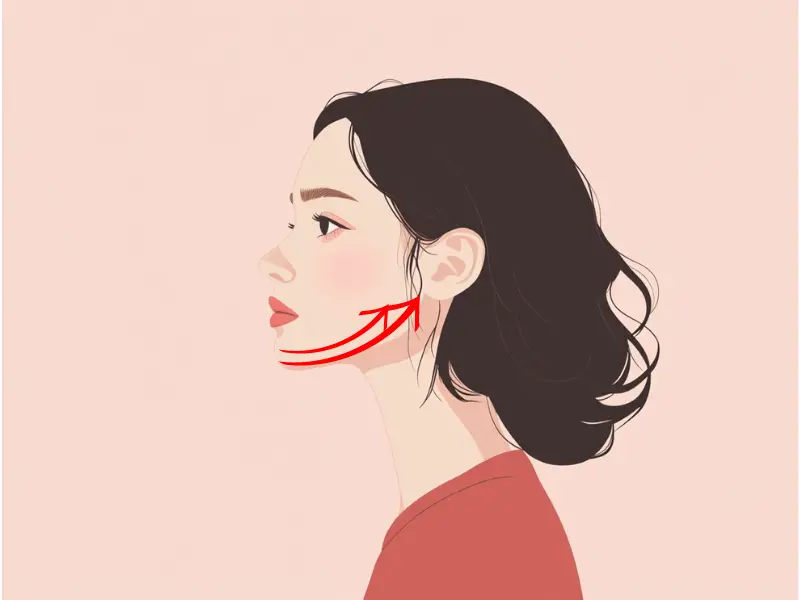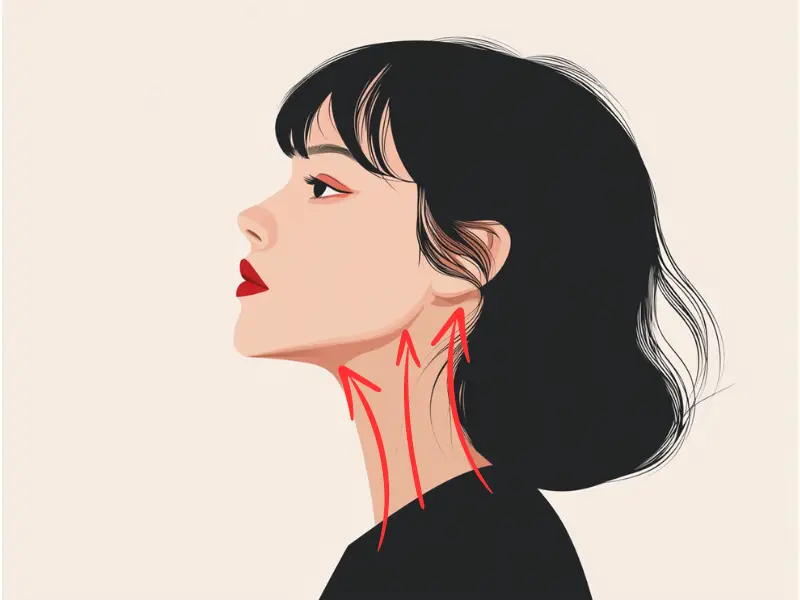Facial gua sha has gained immense popularity for its ability to enhance skin health, reduce puffiness, and improve circulation. However, many people unknowingly make mistakes that hinder their progress and prevent them from fully enjoying the benefits of this ancient practice. To help you avoid these pitfalls, here are the 8 most common mistakes in facial gua sha routines and how to correct them for optimal results. For beginners, check out our basic guide to gua sha to get started before diving into your skincare routine.
1. Using the Wrong Type of Oil
One of the biggest mistakes in facial gua sha is using the wrong oil or skipping it entirely. Without proper lubrication, your tool can drag or tug at the skin, causing irritation and even microtears.
- Choose lightweight oils suited to your skin type, such as:
- Jojoba oil (best for oily skin)
- Argan oil (ideal for sensitive skin)
- Rosehip oil (good for dry or mature skin)
These oils provide a smooth base, allowing the gua sha tool to glide across your face seamlessly, preventing friction and irritation.
“It’s recommended to do gua sha after a bath when blood circulation is good. Avoid doing it after meals. Since blood circulation is improved, toner absorbs more easily, so applying extra toner or using a mask afterward is beneficial for skincare.”
– Ms. Mai Sogawa, Senior TCM Therapist
2. Applying Too Much Pressure
A common misconception is that more pressure will yield better results. Unfortunately, applying too much pressure can cause bruising or break capillaries, especially on the delicate facial skin. Gua sha should feel soothing, not painful.
To correct this:
- Use light to medium pressure for facial gua sha.
- Allow the tool’s weight to naturally guide your strokes instead of pushing down hard.
Example Stroke for the Jawline Area:
- Start at the center of your chin and use the gua sha tool’s notched edge to fit around your jawline.
- Gently pull the tool along the jawline toward the ear in slow, upward motions.
- Apply light pressure, letting the tool glide naturally without forcing it.
- Repeat 3-5 times on each side.

The jawline is often an area where people apply too much force, thinking it will deliver faster sculpting results, but gentle strokes are more effective in promoting circulation and toning without irritation.
3. Moving the Tool Too Quickly
Facial gua sha is not a race. Rushing through your strokes reduces the effectiveness of the lymphatic drainage and circulation benefits that the practice offers.
To slow down:
- Move the gua sha tool slowly and deliberately across each section of your face.
- Each stroke should last about 5-10 seconds, giving your skin time to absorb the benefits.
The slower you go, the more you’ll promote lymphatic drainage and facial relaxation, leaving your skin refreshed and glowing.
4. Neglecting the Neck Area
One of the most overlooked mistakes in facial gua sha is skipping the neck area. The neck is crucial for lymphatic drainage, and working this area allows for better fluid movement throughout the face, reducing puffiness and enhancing circulation.
To avoid this mistake:
- Start your gua sha routine by gently massaging the neck with upward strokes.
- Focus on the sides and back of your neck, pulling the tool upward toward the jawline.

Including the neck in your routine improves overall circulation and ensures that lymphatic drainage is fully activated before working on the face.
5. Not Holding the Tool at the Correct Angle
The angle at which you hold your gua sha tool matters. Holding it incorrectly can cause it to dig into your skin rather than glide, leading to discomfort and inefficiency.
- Hold the gua sha tool at a 15-degree angle against your skin.
- Keep the tool almost flat, allowing the curved edge to gently pull upward in each stroke.
This maximizes surface contact, ensuring better results without irritating the skin.
6. Skipping Consistency
A mistake many make is expecting results from gua sha without consistency. While an occasional session can provide temporary benefits, regular practice is needed to see long-lasting improvements in your skin’s health and appearance.
For optimal results:
- Practice gua sha 3-5 times a week.
- You don’t need long sessions—5-10 minutes per session is enough to keep your skin in top condition.
Over time, consistent gua sha sessions will tone and refresh your skin, giving you a healthy glow.
7. Overworking Certain Areas
It’s tempting to focus heavily on areas like the under-eyes or jawline, where puffiness or fine lines might be more pronounced. However, overworking these areas can lead to irritation, redness, or bruising.
To avoid this:
- Limit strokes to 3-5 per area before moving on to the next.
- Be especially gentle around delicate areas like the under-eye region, using soft strokes.
Example Stroke for the Under-Eye Area:
- Start at the inner corner of your eye, near your nose.
- Using the tool’s rounded edge, gently sweep outward toward the temple.
- Keep the pressure very light and hold the tool at a 15-degree angle.
- Repeat this motion 3-5 times on each side.
Gentle strokes ensure you don’t overstress the skin while still receiving the benefits of gua sha.

“For those with active lifestyles, a light gua sha massage can easily be integrated into your morning and evening face wash routine. You can also do it while watching TV or taking a bath. This way, it becomes part of your daily habit without overstressing the skin.”
– Ms. Mai Sogawa, Senior TCM Therapist
8. Ignoring Your Tool’s Cleanliness
Many forget that keeping the gua sha tool clean is essential. Using a dirty tool can introduce bacteria to your skin, leading to breakouts or irritation. Additionally, residue from oils and skincare products can accumulate, reducing the tool’s effectiveness.
To keep your gua sha tool clean:
- Rinse the tool with warm water and mild soap after each use.
- Dry it thoroughly before storing to avoid bacterial growth.
- Use an alcohol wipe occasionally for deeper cleaning, especially if you have acne-prone skin.
Regular cleaning keeps your skin healthy and ensures the longevity of your gua sha tool.
By avoiding these common mistakes, you can elevate your facial gua sha routine and experience the full range of benefits. Be mindful of pressure, speed, and consistency, and make sure to care for your tool to achieve smoother, more radiant skin!

Try our Anti-Aging Gua Sha Tool designed to bring out your skin’s natural glow.
Best Gua Sha Product- Anti-Aging: The tool is designed to target 11 specific aging signs such as wrinkles and sagging skin. By following the 7-step routine, users can improve skin firmness and reduce fine lines naturally.
- Enhances Skincare Routine: It works effectively with serums and lotions, boosting absorption and efficacy of skincare products.
- Visible Skin Improvement: Users can expect a smoother complexion, reduced puffiness, and a more youthful appearance.
 P. Sze
P. Sze 

















